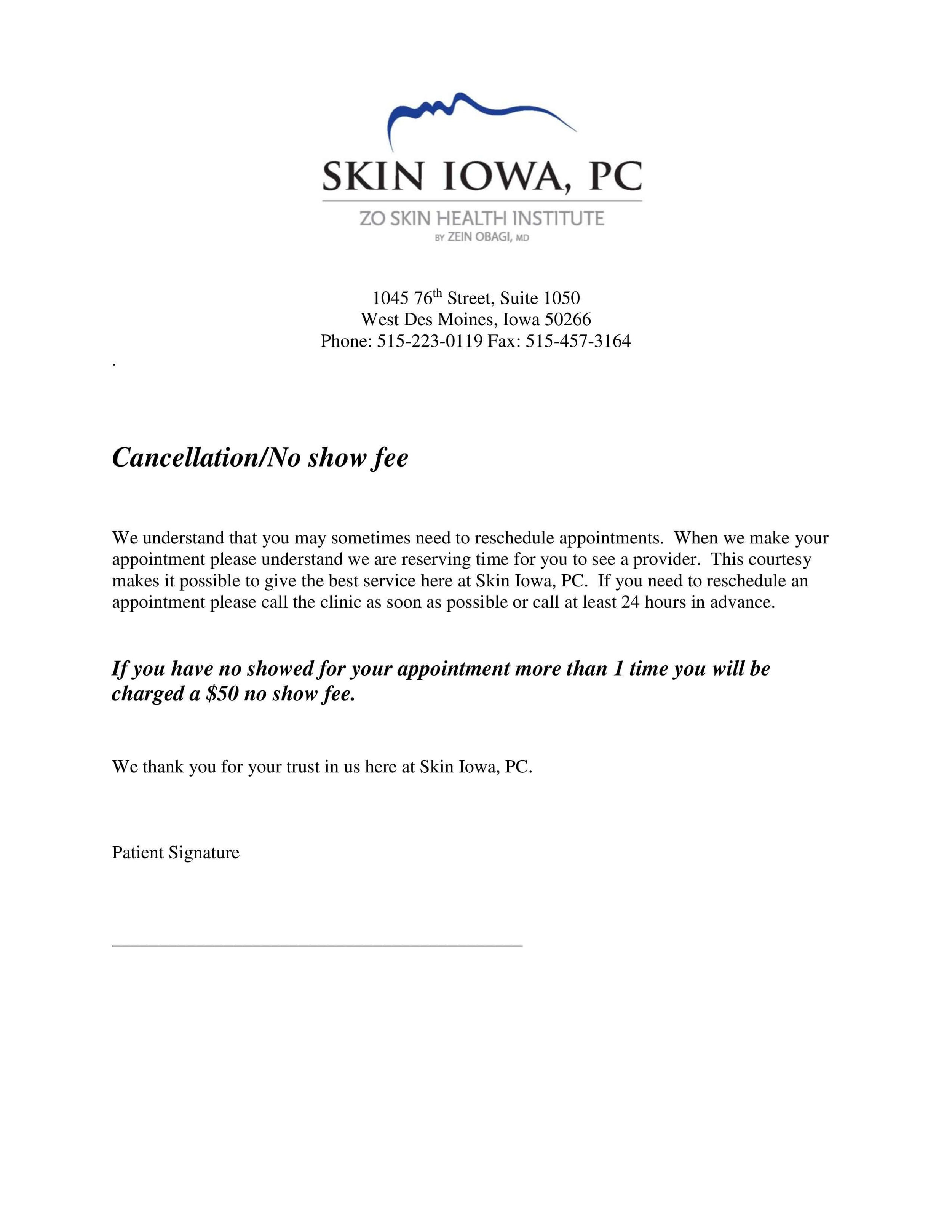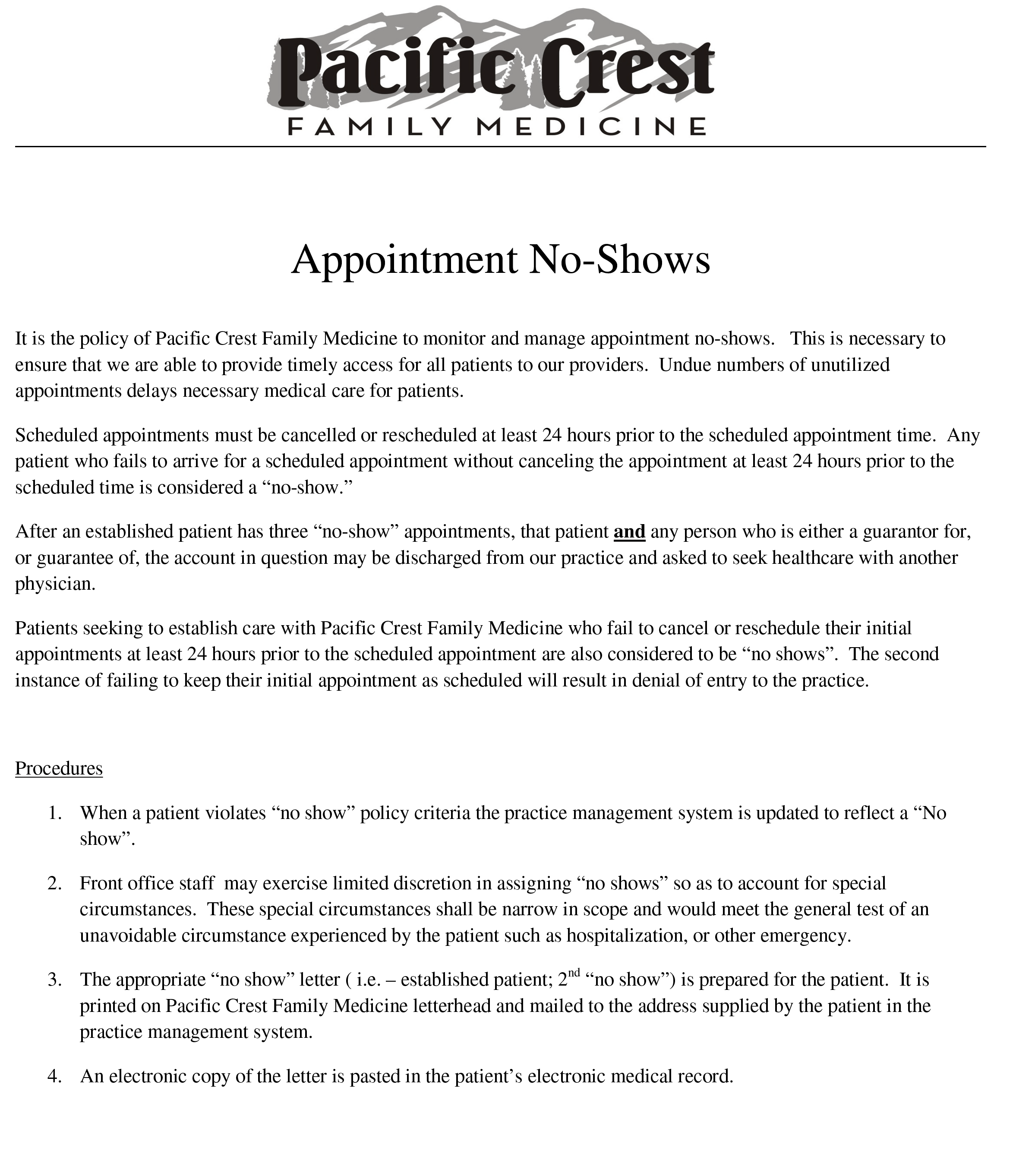A patient no-show rate of just 12% costs healthcare organizations almost $90,000 per year.
Think about how substantial that is, 12% is an overwhelming minority of people not showing up to their scheduled appointments. Yet the costs associated with them adds up to more than the annual salaries of some of the staff.
Sure, there are things healthcare organizations can implement that will reduce their rate of patient no-shows, it won’t ever reach 0%.
There are just too many factors involved to not have some patients who don’t come to their appointment.
Some of these factors include…
Patient behavior
Patients’ financial situation
Environmental factors
Scheduling policies
Your organization could provide the best financial assistance and most convenient scheduling practices available and still have a patient not come through your doors because of a personal matter that popped up.
The point I’m trying to make with all of this is that every healthcare organization has to implement a follow-up process if a patient ditches. A major part of that process requires that you communicate to the no-show. They need to know that what they did hurts your organization and comes with consequences.
The last part of that sentence happens on a case-by-case basis, depending on whether or not the client is a habitual ditcher.
Although different generations prefer different modes of communication from their doctor, sending letters remains one of the most official ways to contact clients. After all, there’s a reason why the IRS almost exclusively uses the USPS to deliver its correspondence.
Thus, creating no-show letters for patients is a no-brainer. They’re an official communicative document that explains why it’s so important to show up to scheduled appointments.
Understanding that they’re important isn’t a hard concept to grasp, though. What’s more difficult is writing a series of no-show letters to use as a template for any patient ghosting scenario. We’ve done that for you, which is why you’re here.
Table of Contents
Template 1: Warning and Acknowledgement
Everyone gets a second chance. Unless your practice is trying to force its patients out by being overly strict on the experience it provides, it should have some leniency when it comes to patients not coming in for their appointments.
A no-show policy and process help give your organization some control over an otherwise uncontrollable annual expense. But it does hurt the overall patient experience.
Patient experience happens to be one of the most important aspects to differentiate your healthcare organization from others. It’s so valuable that almost 90% of clients say that they’re willing to pay for a better overall experience.
In other words, even though your patients expect you to cater to them and implement new ways to better the experience your organization offers, you’ll still have to crack down on those who missed their appointments.
On the industry level, patient no-shows cost $150 billion every year. That's money no healthcare facility can afford to lose.
The first example letter comes from a dermatology office, Skin Iowa, PC. It reemphasizes the point I made earlier in this section that everyone deserves a second chance. This letter template is a good example of what you should send to your no-shows the first time they ditch their appointment.
Yes, it’s lenient and understanding. Yet, that’s exactly what you should send the first time one of your client’s ghosts you. That way, you’re reminding them of your policy while saving on your patient experience.
Who cares if they already signed a form when they first walked through your doors and signed up for your services. They might’ve read the section in the policy handbook you gave them regarding no-shows, yet odds are they didn’t retain it. If they did retain it, they probably forgot about it. After all, studies show that humans forget about 70% of what they learned within 24 hours.
In your warning no-show letter, remind them of the policy they signed up for and any financial penalties that they might receive.
Template 2: Workflow After a No-Show
The business process management industry should reach a total value of almost $5 billion by 2026.
The point I’m trying to make with that statistic is that establishing and explaining processes works. If it didn’t that industry wouldn’t exist.
The fact that it does means that it’s safe to assume that the majority of people learn effectively from an established process.
The second patient no-show letter template comes from Pacific Crest Family Medicine. When reading it, you’ll notice that it’s much more “corporate” in tone. What I mean by that the words on the page aren’t personal, they simply stay true to what they’re explaining.
Using a corporate tone covers all of your bases by describing everything as it is. It's a helpful tone to use for multiple no-show offenders.
The most important takeaway from this template is what Pacific Crest Family Medicine provided at the bottom, the procedure steps.
This is a brilliant move as it provides as much transparency as possible as to what happens the moment a no-show occurs. That way, there isn’t any room left up for confusion or deliberation if a delinquent patient continues to skip their appointments.
Template 3: Policy Restatement
Policies exist for a reason. Senior management determines that a certain process or ethic is important and creates a policy around it.
Of course, it’s not that easy, some laws and policies need to exist to satisfy compliance requirements, especially for healthcare organizations. If those required policies don’t exist, it could lead to a HIPAA violation.
The third effective template isn’t anything more than an acknowledgment of what happened and a restatement of the practice’s policy.
ReGenesis Health Care did a great job of creating an effective no-show letter that forces the delinquent patient to reread its policy and acknowledge that they’ve done so with a provided signature line.
Although requiring a signature from the ghosting patient is effective, it also means more steps. First, it requires that a staff member signs and dates the letter before sending it.
Second, the sending practice needs to ensure that they’re sending this letter to the right address. If they don’t, it will just get sent back by the mail courier.
Third, it requires that the patient identifies the letter through their stack of daily mail sent to their house.
Fourth, they need to sign the letter and send it back to the practice. Hopefully, the practice included a pre-paid postage stamp so that the patient doesn’t have to pay for their acknowledgment out of pocket.
Although it’s only a four-step process, requiring a signature for acknowledgment purposes opens up the door to mistakes happening frequently. It’s up to you to determine the process's viability.
Template 4: How Payment Works
In some cases, healthcare organizations create no-show policies that require monetary penalties to compensate for the uncontrollable loss of business.
It’s a tough consequence that sometimes leads to angry phone calls to the practice’s support team. Yet, its strictness could be enough to ensure that your clients show up for what they’re scheduled for.
Metropolitan ENT uses a similar approach to Regenesis Health Care from the previous section but they also include a fine appointment ditching. They include how much money the organization charges for no-shows, that the fee isn’t covered by insurance (bonus points for this) and that their clients must satisfy balances over $100 before requesting future services. It also includes acknowledgment via signature.
Out of every template I’ve shared with you thus far, Metropolitain ENT’s is the strictest. Yet, it’s strict for a good reason. A lot of company resources go into planning, scheduling and holding surgery. If one of their clients misses a scheduled surgery, the organization loses thousands of dollars.
Conclusion
Establishing a no-show policy is something every healthcare organization should consider implementing. Once approved and established, patients will be less likely to ditch their scheduled appointments, saving the practice thousands of money annually.
But life happens. It’s impossible for any healthcare organization, regardless of its size, to not experience no-shows.
To combat that, you need to implement a process for creating sending no-show letters for your patients. That way you help your delinquent clients realize that what they did goes against your policy where repeat offenses could result in monetary consequences or removal.






